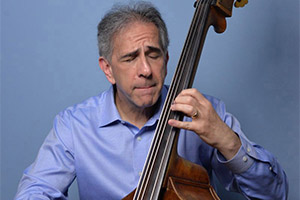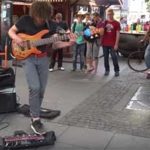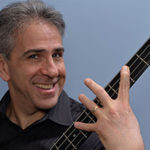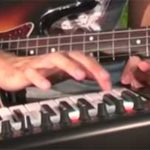“Gluing every element of music” together, all by yourself
By Jon Liebman
Week of August 19, 2019
This week, we published an enjoyable interview with Israeli upright bass sensation Adam Ben Ezra. While bass is Adam’s primary instrument, he’s also quite proficient in keyboards, woodwinds, and a variety of electronic gadgetry, software, loopers, etc., all deftly applied to his always crowd-pleasing one-man shows.
I’ve touched on the subject of single-person shows in previous posts, having interviewed the likes of Greg Lake, Steve Lawson, JD Short, Michael Manring, Victor Wooten, and other bass players ably adept at keeping an audience riveted while going solo. I’m also privileged to have seen Jaco blow people’s minds with his ‘70s-era looping pedals.
Given that the bass is, traditionally, a supporting instrument, it can be quite a challenge for a lone bassist to provide everything that’s required to perform a piece of music successfully, without the aid of a band. He or she would have to concentrate intently on melody, harmony, rhythm, groove, etc., all at once. It would also be advisable to avoid remaining in the lower register for too long, as that will eventually lead to boredom. For the most part, you could say that doing a solo act requires everything we’re already doing as bass players – and more.
It also means filling the void that’s created by the absence of the other instruments that would normally supply melody, chords, drum grooves, and so on. At the same time, the solo act must infuse non-stop variety in textures, articulations, rhythms, and other qualities to keep things interesting.
When I was studying for master’s degree, I had one teacher in particular who required each student to play blues, rhythm changes, and any number of jazz standards, unaccompanied, only one note at a time. The same rule applied to everyone; it didn’t matter if you were a bass player, a horn player, or a piano player. And while limited to only one note at a time, we had to play a melody, outline the harmony, and improvise, all the while making sure the listener could hear the chord changes going by. Naturally, playing in time and in tune were expected as well, notwithstanding the fact that some of the tempos we were called upon to play were pretty brisk! I’m thankful I had such a tough teacher, even though, at the time, I likened to John Houseman’s character in The Paper Chase!
I’m not saying using a looper, or tracks, constitutes cheating. However, I do challenge any musician – bassists included – to think about lone artist approach. It really forces you to think a lot deeper about the structure of a piece of music and, undoubtedly, offers a better understanding of how theory, harmony, melody, rhythm, timing, phrasing, and all the other components of music work together. It also makes you really appreciate your bandmates when you’re not doing a one-person show!
Generally speaking, we don’t get quite that advanced in our online lessons here at FBPO, but we do touch on some of it, particularly in the soloing lessons. When Adam describes how he negotiates these components in his shows, he says he’s “gluing every element of music” together, all by himself.
If the inspiration hits you, maybe you’d like to give it a try too. It’s quite an eye-opening experience!
Have a thought on the subject? Leave a comment below and let me know what you think. In the meantime, check out my interview with Adam here.






I was interested in this post with one note at a time. About 40 years ago, give or take my memory for accuracy I was playing solo string bass at a coffeehouse in the village a 3 1/2 minute walk without a bass from Washington Square in New York. This lasted a few days but I could see the patrons were puzzled seeing and hearing the melody followed by an improvisation. What stopped this job was the walk from the East Village with my bass wheel.